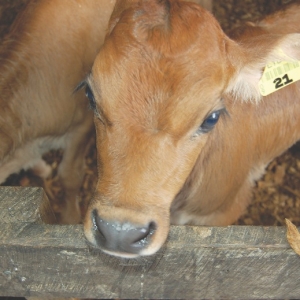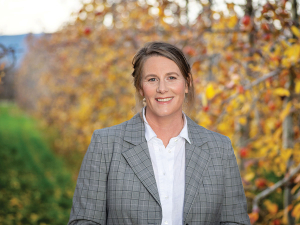And just because you’ve never had rotavirus in your calves, it doesn’t mean it isn’t present on the farm, warns DairyNZ.
“Adult cows often carry the virus asymptomatically,” says senior scientist Gwyn Verkerk. “We can’t say it’s on 100% of farms here but that’s quite likely to be the case. It is a widespread virus.”
Many of those using vaccines do so because they’ve experienced the horrors of a rotavirus outbreak in their calf shed in previous seasons, says Verkerk. “People who have had an outbreak and are using vaccines say they would never go back to not using it,” she notes.
Vaccines work by promoting an antibody response in cows, which is passed onto calves in colustrum. At least three weeks between vaccination and calving is needed for antibody levels to build, explains Stephen Hopkinson, of Taranaki Veterinary Centre.
“Untreated cows do produce rotavirus antibodies but just not at very high levels and there are often issues with the amount of antibody uptake from colostrum anyway,” he told Dairy News.
Once a calf is 12 hours old the amount of antibody uptake is already substantially reduced and by 24 hours old uptake is completely blocked.
“By vaccinating you get about 400-times the antibody level in the colostrum and provided the calf has something in its first six hours, it will have a good level of immunity.”
Giving all calves a feed of first-milk colostrum (ie colostrum from the cow’s first milking after calving) when they arrive at the shed is also good practice.
While some farms selectively vaccinate, Hopkinson says best results are achieved with whole herd vaccination. “It means every cow is contributing to those antibodies in the colostrum store. But it’s not a cheap vaccine so there are a lot of options.”
With veterinary advice, vaccination is something that can be done by farmers and farm staff, but self-injection is a serious safety risk and the injection should be made in the neck, not rump.
Some vaccines require two shots three weeks apart the first time an animal is vaccinated – a sensitiser and a booster – then an annual booster in subsequent years, but there’s also a one-shot option for previously unvaccinated cows. Which will suit your circumstances is part of the discussion that should he had with the vet, says Hopkinson.
Mortality from rotavirus alone isn’t that high but growth rate of calves that come through an infection is often reduced and, because the virus is highly infectious and can sweep through mobs of calves if immunity isn’t adequate, the stress on staff from an outbreak is considerable.
“That’s why many bigger farms go for whole herd vaccination. If you’re only dealing with 50 calves then you might be able to manage but if you have 250 it’s much harder.”
DairyNZ senior scientist Gwyn Verkerk echoes the workload consideration as a key factor. “If you get an outbreak of rotavirus you’re facing feeding electrolyte three or four times a day to affected calves on top of the already busy spring workload.”
Outbreaks can affect hundreds of calves at a time, depending on the size of the farm, and while rotavirus alone is rarely a killer, it weakens the gastrointestinal tract allowing secondary infections such as clostridials or coliforms to gain a foothold, and these can prove fatal.
“In a severe case 80% can die… This is why rotavirus vaccination seems to work so well because it deals with the primary infection which sets up the pathway for a more complex infection.”
Both Hopkinson and Verkerk acknowledge the logistical challenge of vaccinating cows that are being wintered away but Verkerk says cows should be brought home at least a couple of weeks before due date anyway, to avoid transporting too close to time of calving, so they should be home just in time for rotavirus jabs.
“Other management operations can be done at this time as well, such as mastitis checks, body condition scoring, drafting out into different groups according to time of calving.”
At calving, Verkerk stresses “gold colostrum” – colostrum from a cow’s first milking – should be kept separate from subsequent colostrum milkings and reserved for calves’ first feeds.
Provided that feed is within 12 hours of birth it will protect the quarter to one third of calves which research has shown fail to get an adequate amount of colostrum from their mothers in New Zealand’s systems, she says.
Whether to vaccinate the whole herd, or selectively, depends on farm infrastructure and management.
“Some people only vaccinate their three, four and five-year-old cows. They will produce more than enough gold colostrum for all the calves… but it’s much easier for staff if they know that every cow’s first milk has to be kept separate.”
If calves do succumb to rotavirus on a farm where cows were vaccinated, it points to a problem in colostrum feeding, not a problem with the vaccine, adds Hopkinson.
















